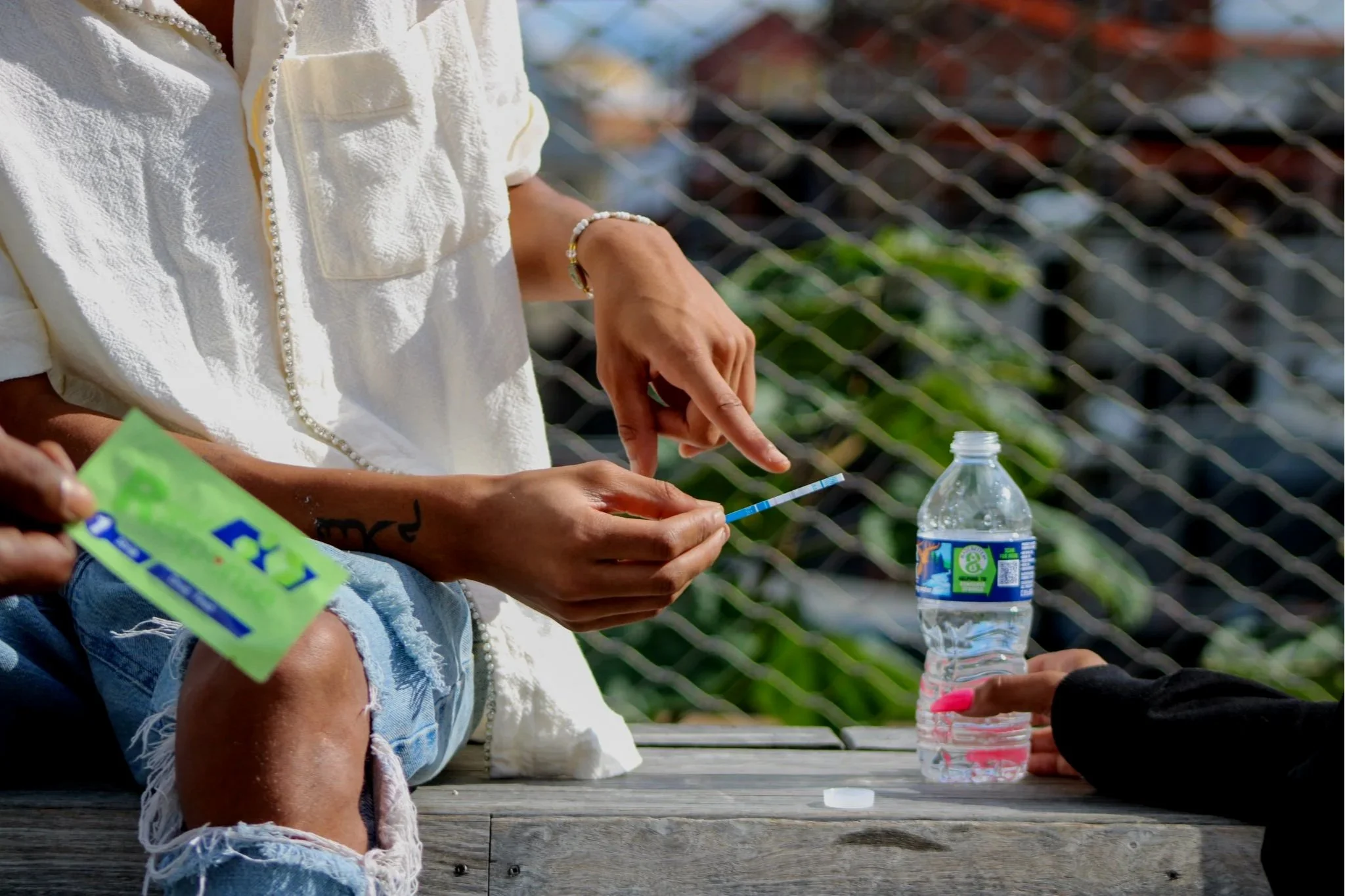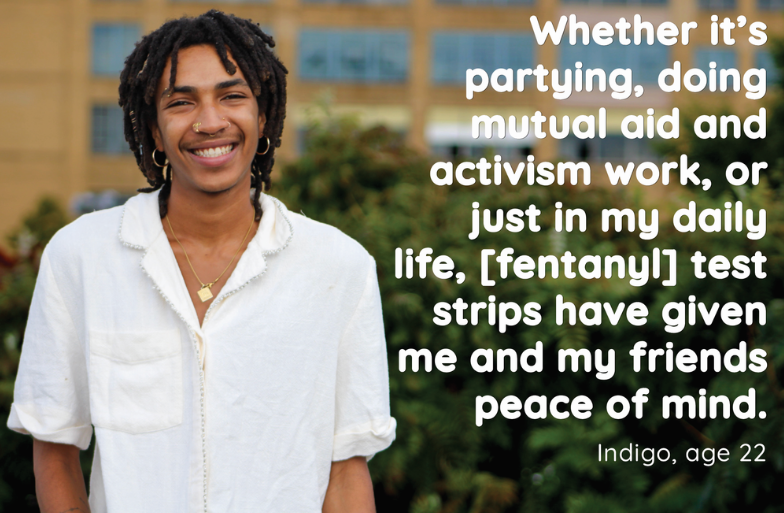
Get Involved in the Community’s Response.
Overdose touches every community in Philadelphia. Here is how you can help.
Last updated May 2025
Educate yourself and others.
In 2023, there were 1,310 accidental fatal overdoses in Philadelphia— a 7% decrease from 2022 and the second highest number of OD deaths ever reported in the city. Drug overdoses touched our entire City, affecting almost every zip code, race, and age group.
Fast facts
-
In 2021, for the first time, more Black Philadelphians died of an overdose than any other racial group, replacing white Philadelphians. While the overdose rate for some groups decreased, overdose deaths among Black Philadelphians increased 61 percent (384 to 617) from 2019 to 2023. Similarly, overdose rates among Hispanic individuals increased 17% (183 to 214), while rates among Non-Hispanic white individuals decreased 19% (566 to 457).
Read our 2023 chart report for more information.
-
In 2023, zip codes with the most fatal ODs included:
19134 (191 overdoses)
19140 (74)
19124 (85)
19133 (74)
Most overdoses occurred inside of homes (67%).
Read our 2023 chart report for more information.
-
Most overdose deaths in 2023 involved a combination of opioids and stimulants (55%, n=721). Deaths involving stimulants (both with and without opioids) decreased 8% from 2022 (996) to 2023 (919). In 2023:
Opioids (mostly fentanyl) were detected in 82% (1,078) of all overdose deaths.
Stimulants (mostly cocaine) were detected in over 70% (919) of all overdose deaths.
Xylazine was detected in 38% (495).
Read our 2023 chart report for more information.
Use person-first language.
Stigma is a concept that many of us are familiar with but struggle to define. Stigma is a social process that is linked to power and control. It leads to stereotyping, labeling, and the creation of “in-groups” and “out-groups”. Once a group is stigmatized, it is difficult to change the label. It is likely that each of us has at one point been stigmatized ourselves and imposed stigma upon someone else.
Drug-related stigma is largely normalized and negative ideas about people who use drugs (PWUD) are rarely challenged. In the media, in our families, and in our communities, negative stereotypes and labels of PWUDs have existed for decades. PWUDs have been labeled as “less than” individuals who should not be apart of society or offered the same opportunities. There is often a failure to recognize the complicated social condition in which drug use takes place. For PWUDS, stigma affects their relationships with families, employers, educators, health care providers, housing, and maybe most deeply – themselves. When stigma is reinforced and internalized by PWUDs, they may feel like they aren’t worth seeking care or that they don’t deserve treatment.
Person-first language is communicating with a focus on the person, not their condition. It acknowledges that they are more than their substance use and should be treated as such. Our team has created a person-first language guide because how we talk to and about PWUDs matters. Our focus on the words we use isn’t about being “politically correct,” but instead it's about combating stigma and treating people who use drugs with dignity and respect. Consider using person-first language and encourage others to do that same.
Get naloxone and test strip trained.
There are free resources that can help prevent or reverse an opioid overdose. Both are quick and easy to use. Our program hosts weekly trainings in person and virtually. Visit our events page to find a scheduled training or our get supplies page to request a group training.
Fentanyl or xylazine test strips can help you check your drugs to make sure that what you take is actually what you thought you purchased. Over the last few years, fentanyl has been found in the stimulant drug supply, which are drugs like crack and cocaine.
Small amounts of fentanyl taken by someone who has not previously had the drug can be deadly. Using fentanyl test strips before using any drug can prevent an overdose. Currently, we have only found xylazine in combination with fentanyl in the dope supply; however, it is good practice to use xylazine test strips to test all drugs.
Naloxone (also known as Narcan®) is a safe and easy-to-use nasal spray you can use to revive someone who is experiencing an opioid overdose. When taken, opioids bind to specific places (receptors) in the brain. Naloxone binds to those receptors to block or reverse the effects of opioids. This allows the person experiencing an overdose to breathe again. Naloxone does not produce a negative effect if a person is not experiencing an opioid overdose and it is given.
Get resources for you and your community.
Whether you, or a loved one, are buying Percocet (percs) or Xanax (xanies) on the street, using party drugs like cocaine, or using other substances, such as dope or lean, it’s important to know that we have tools to keep each other safer, healthier, and alive.
Naloxone, fentanyl and xylazine test strips, and other resources, are available free of charge throughout Philadelphia. It is important that we all carry naloxone and keep stocked at home in case of emergency. Even if you do not personally need it, having it on hand can help save a life.
Get resources at a pop-up or community event.
The City’s Division of Substance Use Prevention and Harm Reduction (SUPHR) hosts, or attends, pop-up and community events across the city where you can pick up naloxone, test strips, and other harm reduction resources. Visit our events page to find an event.
Get naloxone at a pharmacy.
In 2014, the Pennsylvania Department of Health released a standing order, which allows anyone to visit a pharmacy and receive naloxone without a prescription. The medication can be billed to your insurance and combined with a $75 co-pay assistance coupon. Visit the get supplies page to find a pharmacy near you.
Recently, Narcan became available over the counter at pharmacies and major retailers, such as CVS or Walmart. This means you will not need to speak to a pharmacist or bill your insurance. You can simply grab it from a shelf, pay, and leave. It retails for around $45. Call or visit your local store for more details and availability.
Get resources from a community partner.
SUPHR works with a number of community organizations to distribute supplies. Visit the get supplies page to see a list of organizations, their contact information, and where to find them.
Get resources at your door.
Keep an eye out for folks in your neighborhood dressed in royal blue. They are members of the Philly Counts team, a group of outreach workers from the City’s Office of Community Empowerment, began a door knocking campaign in October 2023. This campaign is designed to raise awareness about rising drug overdose deaths in Black and brown communities in Philadelphia.
The project aims to hit more than 100,000 doors in certain zip codes, focusing on “hot spots” for overdose outside of Kensington. The Philly Counts team will provide education and an opioid crisis resource kit that includes naloxone, fentanyl test strips, and an informational booklet about how to access substance use treatment.
Get resources from an overdose awareness training.
SUPHR hosts two virtual overdose awareness and reversal trainings each month. When you register for a training, you can request to have naloxone mailed to you.
Get supplies for your group.
Are you part of a group or organization that can give out naloxone or test strips? Submit a request to register as a partner and receive a harm reduction supply.
Get resources mailed to you.
Having trouble finding resources near you?
Our partner, NEXT Distro, can discreetly mail free naloxone and test strips to any residence in the city. You do not need insurance to receive supplies through this service.



